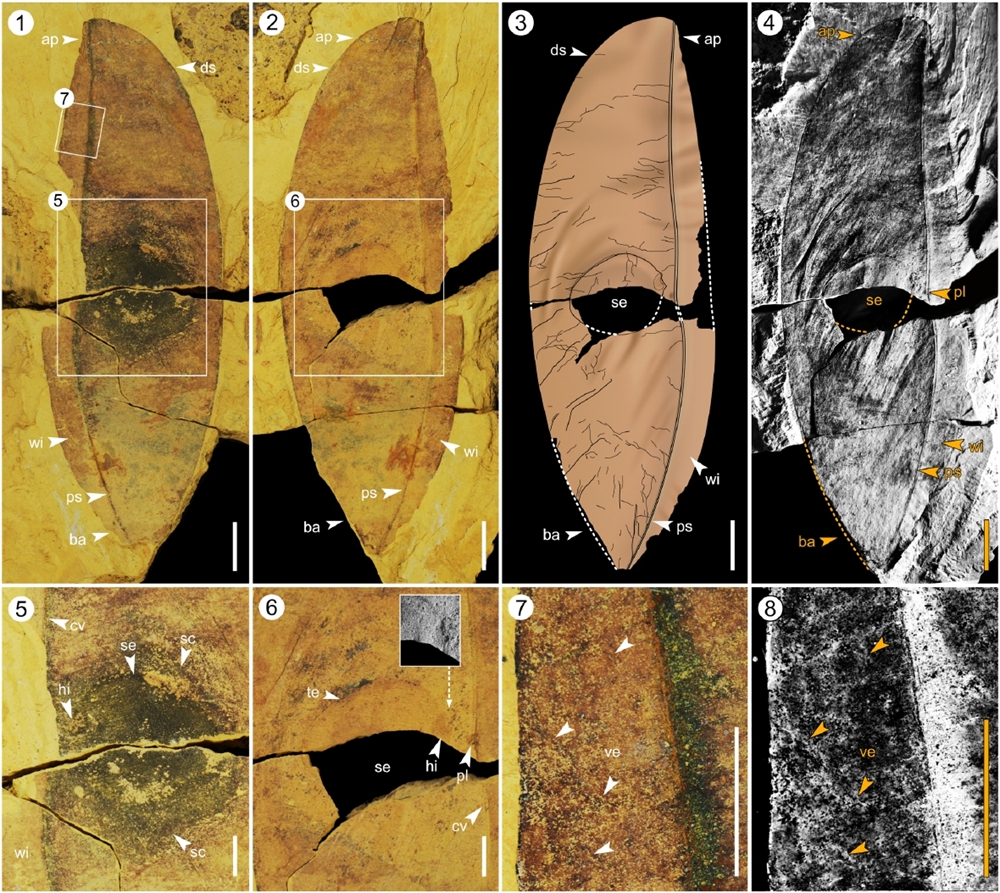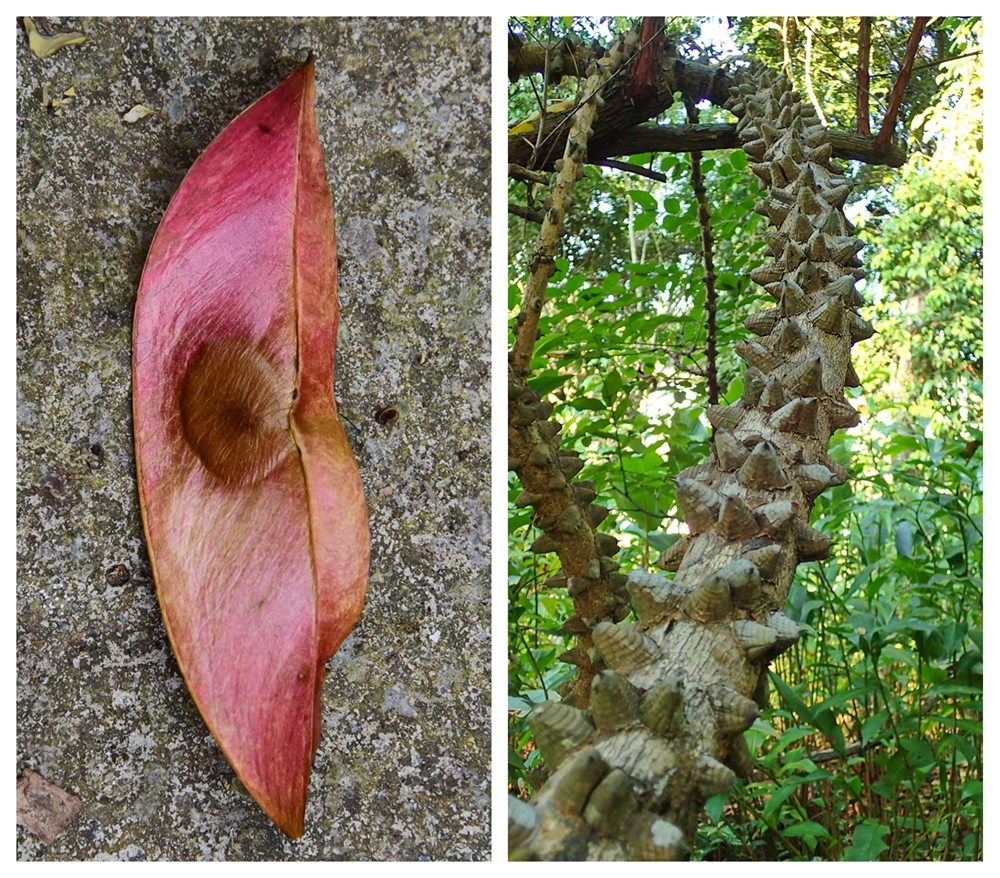The genus Mezoneuron (Caesalpinioideae) in the legume family is distributed throughout the tropical and subtropical Old World, with 23 extant species documented globally. It represents a typical group for indicating tropical environments. Three species are living in Southwest China.So far, no fossil occurrences have been reported from Asia or any other region of its modern distribution range.
During their field investigations in southern Yunnan, researchers from Xishuangbanna Tropical Botanical Garden (XTBG) found a unique winged fruit fossil from the lower Miocene Sanhaogou Formation of Jinggu Basin. After careful morphological studies and comparison with extant species, the researchers confirmed it as a new Mezoneuron pod fossil and represented the first fossil occurrence of this genus in Asia and the only one within its current distribution range.
The new Mezoneuron pod fossil was named as Mezoneuron zhekunii in honor of Prof. ZHOU Zhekun, a distinguished palaeobotanist who is greatly dedicated to Cenozoic paleobotanic research in China. Related result was published in Review of Palaeobotany and Palynology.
Mezoneuron zhekunii presents a vascularized wing along the placental suture and with poorly developed, irregular reticulate venation, which are typical pod characters in Mezoneuron. It exhibits similar morphology to the single-seeded North American fossil pods including M. claibornensis and M. spokanensis . However,it is much larger and has finer central veins than those two fossil species. It shows fine wrinkles on the pod surface, especially noticeable around the seed chamber, a feature never documented in previous fossil records.
Its nearest living relative is M. cucullatum, currently distributed across southern Yunnan, India, and Southeast Asia.
The discovery of M. zhekunii suggests that Mezoneuron reached its current distribution by the early Miocene. Mezoneuron appeared in tropical Asia at least in the early Miocene, and its specialized pods help it to be wind dispersed in open areas such as tropical forest edges, so it continues to develop and differentiate in this region.
"Mezoneuron attained relatively low latitudes in Asia no later than the early Miocene, with our fossil representing the lowest latitudinal record,” said HUANG Jian of XTBG.
Contact
HUANG Jian Ph.D
Key Laboratory of Tropical Forest Ecology, Xishuangbanna Tropical Botanical Garden, Chinese Academy of Sciences, Mengla, Yunnan 666303, China
E-mail:huangjian@xtbg.org.cn
Published: 11 April 2024

Pod fossil of Mezoneuron zhekunii (Image by HUANG Jian)

Extant Mezoneuron?cucullatum (Image by HUANG Jian)


